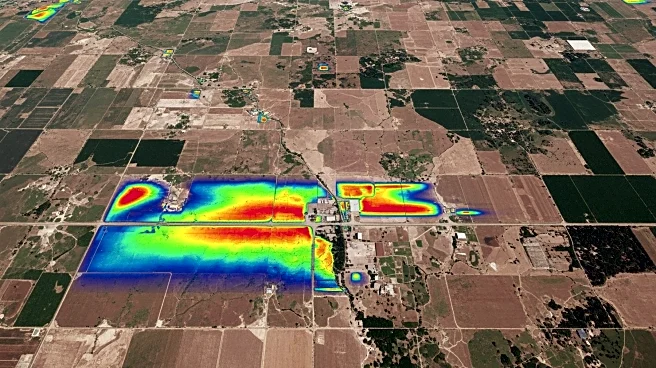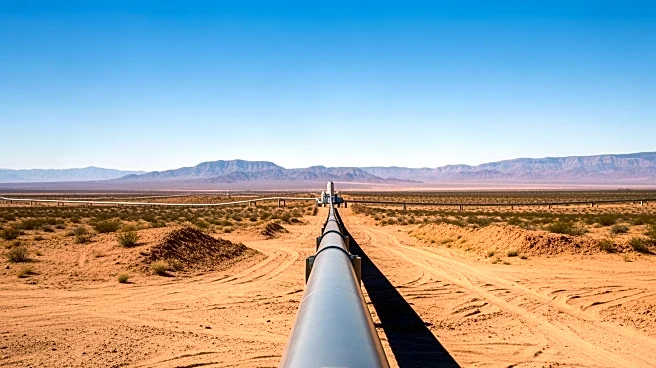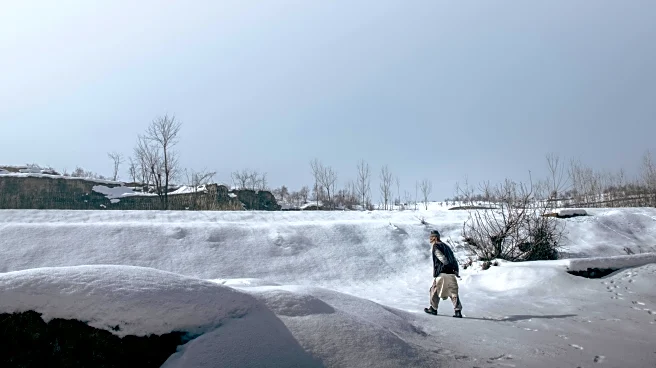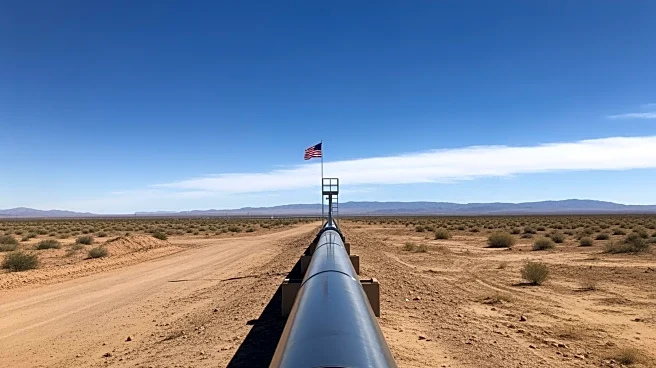What's Happening?
Researchers from San Diego State University are conducting a study to understand the impact of climate change on heat levels in rural areas, particularly focusing on farmworkers in California's Imperial and Coachella valleys. The study aims to map areas of extreme
heat using satellite imagery and wet-bulb globe temperature data. This research is crucial as farmworkers in these regions face significant health risks due to rising temperatures, exacerbated by greenhouse gas emissions. The study also examines how different crops and seasons affect heat stress levels among farmworkers. The findings are intended to inform better protective measures and interventions for these workers.
Why It's Important?
The research highlights the growing vulnerability of farmworkers to extreme heat, a consequence of climate change. This is particularly significant in California, a major agricultural hub, where rising temperatures threaten both worker health and agricultural productivity. The study's findings could lead to improved safety guidelines and policies, potentially reducing heat-related illnesses and fatalities among farmworkers. As these workers are essential to the agricultural supply chain, their well-being directly impacts food production and economic stability in the region. The research also underscores the need for stricter enforcement of existing heat safety regulations.
What's Next?
The researchers plan to expand their study to California's Central Valley and other parts of the Southwest, including Yuma, Arizona. This expansion aims to provide a broader understanding of rural heat impacts and develop comprehensive strategies to mitigate heat stress among farmworkers. The study's outcomes could influence policy changes and encourage the implementation of more effective heat safety measures across the agricultural sector. Additionally, the research may prompt further investigations into the effects of climate change on other vulnerable worker populations.
Beyond the Headlines
The study sheds light on the ethical and social dimensions of climate change, particularly its disproportionate impact on marginalized communities like farmworkers. It raises questions about the adequacy of current labor protections and the responsibility of policymakers to address these inequities. The research also highlights the potential for technological advancements, such as satellite imagery, to play a role in environmental and occupational health monitoring.
















